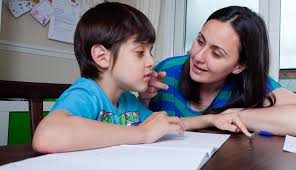Language development in children occurs in the same manner. The difference only comes in the timing. There are stages in language development in children whereby the child learns a particular set of words instead of others. When developing language in a child, it is best to assume that the child is an individual of their own and that they want to communicate. From as young as one year, talk to your child. Notice the things and games that they love and follow their lead. For example; if your child loves to gaggle, gaggle along in the same manner. This reassures the child that they can communicate with you and that you are listening. It is one of the ways to hasten language development in children.
If by the age of three years, the child isn’t able to speak at least 50 words, then this is the time to get concerned. At age three, the child should be able to pair sentences together and give logical explanations to simple questions. They should also be able to analyze, to some extent, the truth of the communication and consistency of actions to predict the next course of action. However, there is no need to panic as language development in children is very dynamic. They learn much faster once we figure out their learning difficulties and the right approach to tackling them. Eventually, they get to the level where their peers are. Therefore, parents and teachers must be analytical, adaptable, and patient.
The easiest words to speak for a child are those formed from the CVCV structure; where C stands for consonant and V stands for vowel. Such words include mama, dada, lala, and the like. The next easiest words are triphthongs, whereby there are about three vowel sounds following one another. The Kamba language, for example, has triphthongs in words such as aeiya to mean milk.
Learning consonant sounds is the hardest of all for children to learn. This is because the place of articulation at the glottal cavity requires one to stop pushing the air for a second or so and releasing the air all of a sudden. This for toddlers is technical.
Lastly, it is easier for toddlers to learn while pointing at objects. This helps the learner or toddler to visualize the object and keep it in their tiny memories.
Are you currently learning English as a second or third language and need help in passing your GMAT Verbal, TOEFL, or any other English test? Do you have a young one who needs assistance in developing his English language skills? Kindly reach out. I have taught English for over a decade and helped many young and old learners become experts in learning all the intricacies and complexities of this beautiful language.



